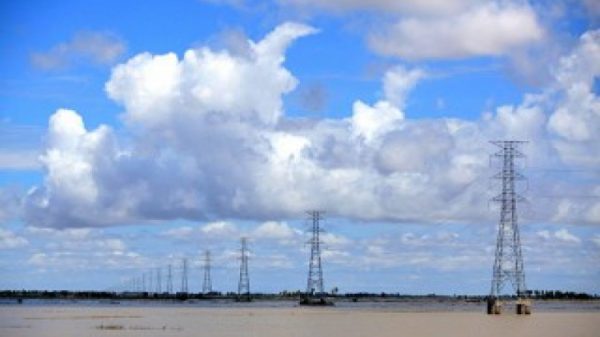$3.7b needed to use half power capacity until Dec

- Update Time : Monday, July 10, 2023
- 21 Time View

Bangladesh will need to spend over $3.7 billion to use half of its installed power capacity without interruption over the next six months starting in July, an estimate by the Power Development Board showed, adding that meeting the expense would require a subsidy of over $2 billion.
The PDB calculation covers the need for money to import fuels such as furnace oil and coal, pay loan instalments, and import electricity from India. Half of Bangladesh’s current installed power generation capacity of 24,143MW depends on furnace oil, coal, and power imports.
The calculation, however, did not include the money needed for importing liquefied natural gas, which accounts for a fifth of the country’s gas demand. Gas-based power plants account for about half of the installed power generation capacity, with 80 per cent running on domestic supply.
Bangladesh spent about $4.5 billion between 2018 and 2021 on LNG imports, according to the Centre for Policy Dialogue.
Bangladesh’s actual power demand is unknown because of its highly unreliable power system, fraught with power interruptions even when demand drops below 10,000MW. Bangladesh’s highest-ever power generation of 15,648MW was recorded on April 19.
The PDB requirement for ensuring load-shedding-free electricity between July and December gives a grim reminder about Bangladesh’s prolonged dollar crisis, a substantial part of which, according to energy experts, is caused by ‘predatory’ power sector expenses.
‘The assessment of what we need for supplying uninterrupted electricity reveals the government’s commitment to ensuring power for all,’ said SM Wazed Ali Sarder, in charge of power generation at PDB.
Wazed was confident about the government’s ability to fulfil their demands.
But energy experts have doubts about it, given other dollar requirements in the power sector, such as paying the capacity charge, which is estimated to be over $3 billion this year, and meeting mega power project debt expenses of $2 billion annually.
The PDB’s accumulated loss over the 12 years until 2021–22 exceeded $10 billion, with the state-owned power company set to suffer another $10 billion in losses this year and next, according to research by the government’s Implementation Monitoring and Evaluation Division.
‘No amount of loan or allocation can save the power and energy sector with its predatory expenses,’ said M Shamsul Alam, energy adviser, Consumers Association of Bangladesh.
Shamsul argued with evidence in public hearings organised by the Bangladesh Energy Regulatory Commission that power sector losses could be minimised by checking corruption, system loss, and inefficiency, and cancelling controversial power purchase deals.
The current power system is not sustainable, said the IMED research, which was revised over a month after its publication on July 8, saying that fossil fuel imports, power plant machinery imports, and capacity charges kept draining dollars.
Energy experts said that the PDB balance sheet rendered the company ineligible for loans from foreign banks, while local banks were not in a position to extend any big loans in dollars, particularly when the government was carrying out reforms under $4.7 billion loan assistance from the International Monetary Fund.
Fuel shortages triggered by the dollar crisis have already led to the closure of many power plants over the past year, including the largest 1,320 MW Payra power plant, taking load-shedding to over 3,000MW.
In its calculation, the PDB said that until March, it owed over $2.3 billion to different companies, including power producers and gas suppliers.
The PDB estimated that it would need to import coal, furnace oil, and electricity from India for $518 million this month, followed by $524 million in August, $518 million in September, $5515 million in October, $385 million in November, and $431 million in December.
The PDB did not get what it needed in June—$438 million—for running its half capacity without interruption.
Over the next six months from July, the PDB estimated, a $365 million subsidy would be required every month if the government wanted to supply electricity without interruption.
Subsidy requirements have dramatically increased in the power sector over the years, from $400 million in 2017 to $3.2 billion in 2024, accounting for nearly a third of all subsidies required in a year, according to e CPD study published in June.
In the energy sector, on the other hand, the subsidy requirement increased to $2.1 billion in 2023 from $360 million in 2018, according to the CPD study.
The term subsidy is controversial because the money the government paid as subsidies from 2006–07 to 2020–21 was extended as a loan with 3 per cent interest, generating nearly $1 billion in interest over time, according to official data.
In an analysis in January, the CPD showed that education and health subsidies decreased in terms of GDP ratio in the budget of 2023–24.
‘The power and energy sector protected by an indemnity law is being used to serve the interests of a syndicate of national and international businesspeople,’ said economist Anu Muhammad, also a former member secretary of the civil rights group National Committee to Protect Oil, Gas, Mineral Resource, Power and Ports.
The IMED report that was revised in its original version talked about a team of corrupt managers, posted in the power ministry, secretariat, central purchase committee, and central procurement technical unit, turning Bangladesh’s power and energy sector into a rehabilitation centre for ineligible suppliers, mainly from India and China.

























